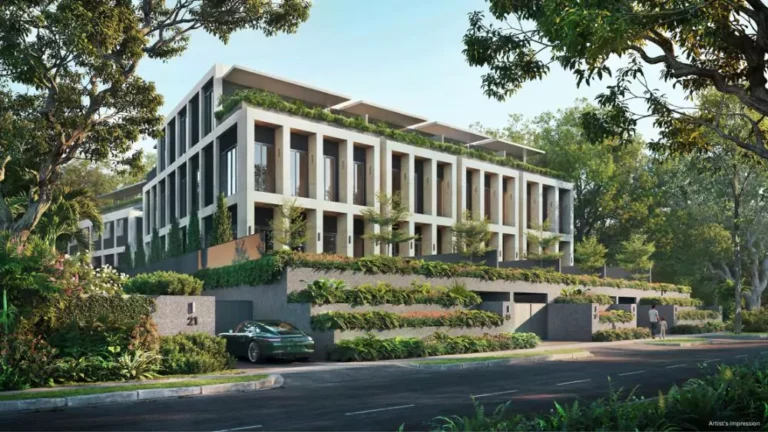Pantone’s Colour of the Year 2025 is Mocha Mousse, plus additional stories

For PropertyGuru’s news roundup, Pantone’s Colour of the Year 2025, Mocha Mousse, is a shade easily integrated into interior designs, appealing to the desire for comfort and warmth. In other headlines, there are opportunities found in assessing existing challenges in the built environment – including age and design, regulatory pressures and location – and turning them into value and returns. Lastly, the 12th Vietnam-Japan Disaster Management Cooperation Dialogue discussed new approaches to flood reduction using risk information.
Pantone announces Mocha Mousse as Colour of the Year 2025
Pantone Color Institute has selected PANTONE 17-1230 Mocha Mousse as the Colour of the Year 2025. The warm, brown hue, reminiscent of chocolate mousse and latte coffee, aims to bring a sense of comfort, intimacy, and elegance. This represents a versatile hue that can be combined in a multitude of pallets, from monochromatic earthy shades to mixtures of soft pastels, or even exotic combinations of vibrant colours balanced out with the rich yet subdued tone of Mocha Mousse.
In a progression from last year’s Color, Peach Fuzz, Pantone set out to bring the soft shade closer to an earthy soft brown, evocative of sweet indulgency, “quiet luxury,” and comfort. The colour is also closely related to the natural world, hoping to encourage a deeper connection to our natural environment.
According to ArchDaily, Mocha Mousse is a shade that can be easily integrated into interior designs, appealing to the desire for comfort and warmth. Its refined and grounding hue makes it easy to balance a variety of colour palettes, acting as a design chameleon that easily adapts to both cool or warm shades, dark, vibrant, or soft. It makes for a truly versatile colour that can act as either a hero accent among neutrals, an impactful statement when used as a solo colour or as a balancing hue when paired with deeper pigments.
Turning risk to opportunity: rethinking value creation in aging places and spaces
The global commercial real estate market continues to rapidly evolve as shifting preferences for how space is used and where development takes place conflate with tightening sustainability requirements and strained national and local finances and infrastructure. JLL’s latest research “Opportunity through obsolescence,” is the first in a series of articles exploring the multifaceted opportunities found in assessing existing challenges in the built environment – including age and design, regulatory pressures and location – and turning them into value and returns.
JLL finds that of the 776 million square meters of existing office space across 66 markets globally, about half of that space, or 322-425 million square meters, is likely to require substantial investment to remain viable in the near term – an investment of approximately USD933 billion to USD1.2 trillion in spending. Proactive engagement to retrofit and update existing assets will be key to unlocking opportunities for value creation through strategic investment and adaptation, particularly in the U.S. and Europe, where 78 percent of office products and 83 percent of necessary capex is found.
“The commercial real estate landscape is at a turning point as property owners and cities look to establish long-term viability of existing buildings and districts, in the face of evolving experiential and spatial preferences, increasing regulatory pressures, climate risk and changes in real estate demand,” said Cynthia Kantor, CEO, Project & Development Services, at JLL. “By proactively assessing and addressing outdated and at-risk buildings, owners can unlock significant value, create a more sustainable, resilient built environment and drive future returns.”
Vietnam and Japan discuss new approaches to reduce natural disaster risks
The Ministry of Agriculture and Rural Development and Japan’s Ministry of Land, Infrastructure, Transport and Tourism (MLIT) on 28th November organised the 12th Vietnam-Japan Disaster Management Cooperation Dialogue, discussing new approaches to flood reduction using risk information. VietnamPlus reports that the dialogue brought together representatives from the Departments of Agriculture and Rural Development of northern and central provinces and cities in Vietnam.
Speaking at the event, the Director of the Department of Dike Management and Disaster Prevention Pham Duc Luan said that the dialogue provided an opportunity for Vietnamese and Japanese experts to exchange experiences, and find solutions to minimise the risk of natural disasters, particularly floods and landslides.
Nguyen Xuan Tung, an officer from the department said that Vietnam is vulnerable to many kinds of natural disasters, especially floods which occur in all three regions across the country.
To minimise damage caused by floods, he pointed to the need to improve the legal framework and policies on natural disaster prevention and control, raise public awareness of natural disasters, strengthen community-based risk management, and enhance the capacity of natural disaster prevention, control, search and rescue.
Mizushima Yusuke from the Department of International Affairs, the MLIT’s Bureau of Water and Disaster Management said that in Japan, information on natural disaster risk is available on the ministry’s disaster risk map portal. This map will show the frequency of floods and flood water levels. In addition, authorities guide people to move to areas with lower risk. In Japan, it is mandatory to present a disaster risk map when conducting real estate transactions and provide information on the location of the relevant real estate. Authorities must develop evacuation plans.
The Property Report editors wrote this article. For more information, email: [email protected].
Recommended
Meet the expert helping overseas investors crack Australia’s property market
Ivan Lam of property advisors Charter Keck Cramer helps clients navigate Australia’s complex real estate dynamics
ARES White Paper Volume 3: The era of adaptive reinvention
Pioneering sustainable and innovative practices in urban development
ARES White Paper Volume 2: Unravelling the power of data revolution in real estate
Insights on proptech, smart cities, and sustainable development
ARES Digital White Paper Volume 1: The fundamentals of responsible building
Green and climate heroes join forces to discuss how Asia Pacific can weather the current environmental crises and the looming effects of climate change






